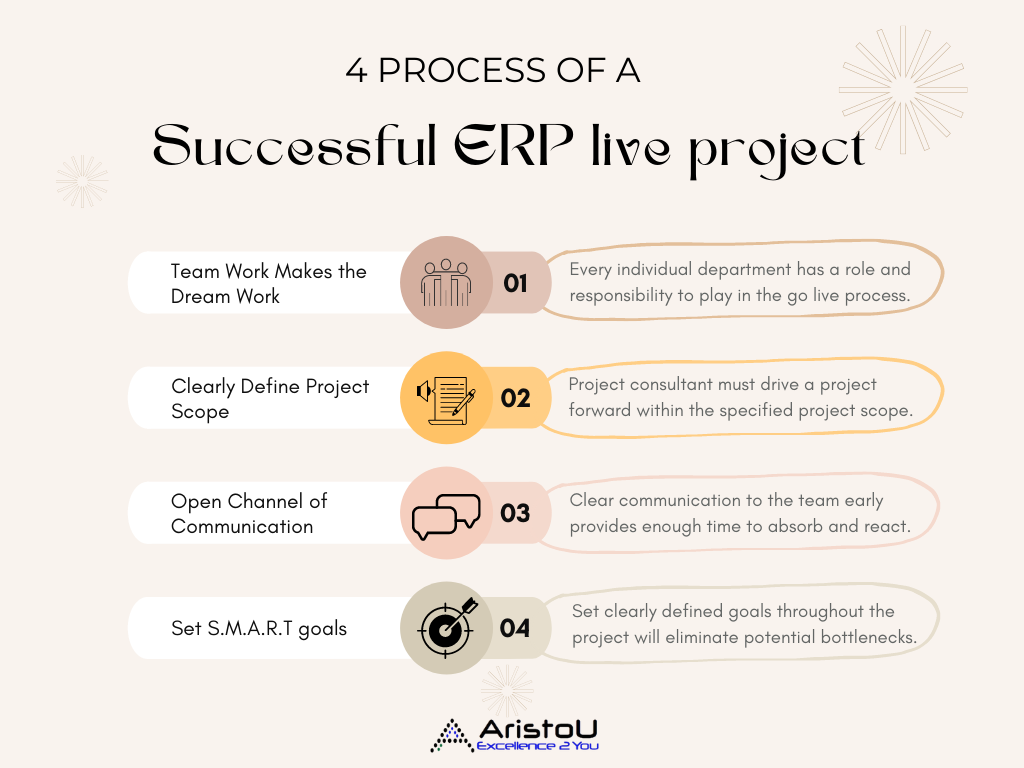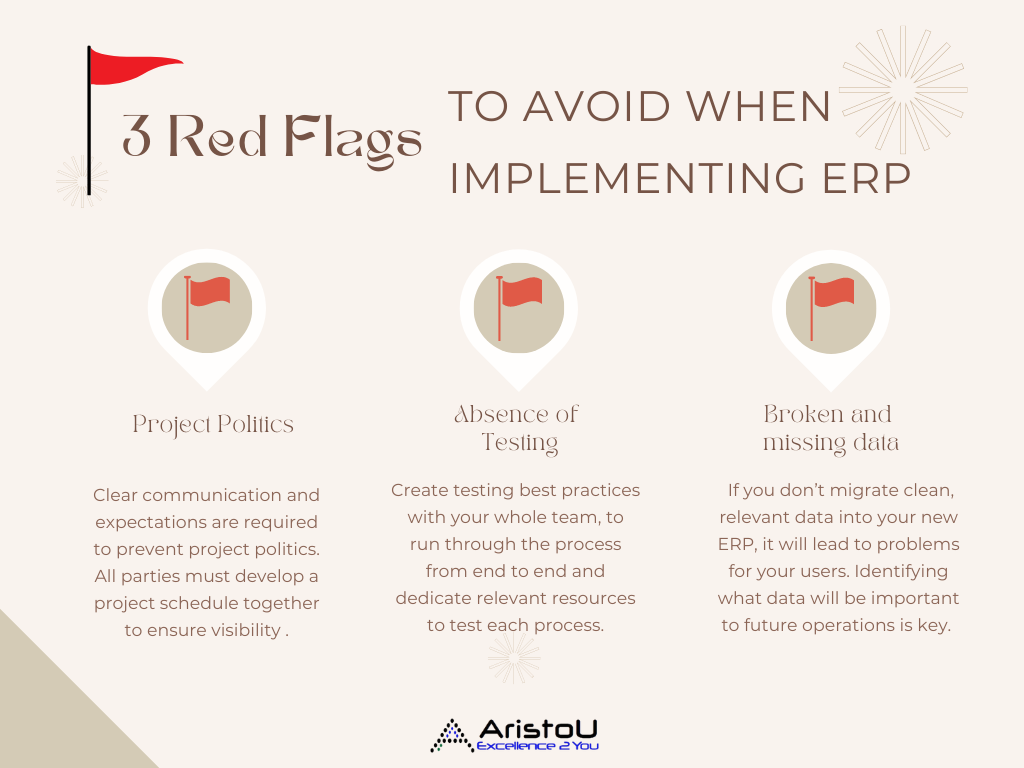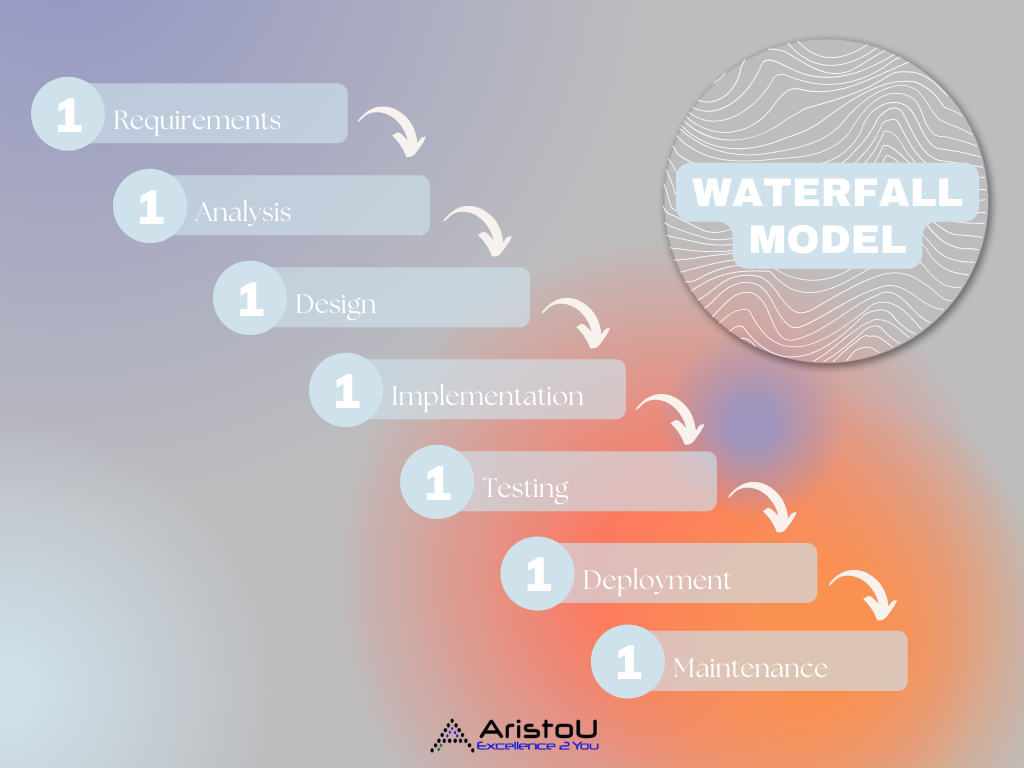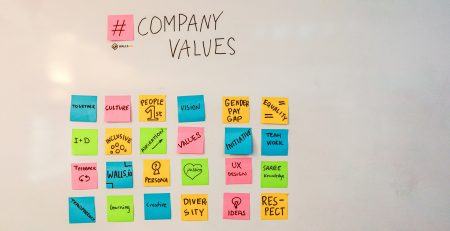3 key areas nobody tells you about the ERP implementation phase (which we will)
Don’t click on this article if you want your ERP implementation to fail. We’re just kidding.😎
In our previous blog post, we covered the 5 key secrets all ERP project managers must know. To achieve a successful go-live, it’s important to refine and evolve your methodology as industries change.
We’ve learnt about the 6 core phases of ERP implementation, but how about what not to do?
In this blog post, we’ll dive deeper into 3 main sections nobody tells you about the ERP implementation phase and the best practices for a successful go live project.
Keep reading!
4 areas to consider for a successful live project
Below are 4 main areas for every ERP implementation team to note and take into consideration for a successful go-live project.
1. Team work makes the dream work
-
-
ERP project go-live is a huge commitment and requires entire team to work together to complete the first cycle of month-end closing.
-
Every individual department has a role and responsibility to play a part in the project. We can’t fall apart as pieces and puzzles.
-
2. Clearly defined project scope
-
-
A clearly defined project scope will benefit the project consultants greatly- helps them know how to drive a project with high engine speed toward the winning line.
-
3. Open channel of communication
-
-
Ineffective organizational change management and poor communications are often among the top contributors to ERP failures.
-
The ability to communicate to management and the team early and transparently allows them enough time to absorb and react.
-
4. Set SMART goals
-
-
Specific, Measurable, Achievable, Relevant, Timely- SMART goals are no stranger to us. Setting clearly defined goals throughout the project will help eliminate any potential bottlenecks.
-
Creating a go-live checklist is vital to your success, yet it can be one of the most overlooked factors in a project.
-

🚩3 red flags to avoid when implementing Business Central- and how to fix it
Red Flag 1: Project Politics
What: If the project gets delayed, project members ends up pointing fingers at each other. If so, the consultant has reached the stage and lost control of the project.
To avoid it: Communication and clear expectations must be set to prevent the blame game.
-
-
-
-
Create a project schedule during project planning with your implementation partner and team. The schedule should account for the difficulty of various technical steps and the possibility of problems. Prepare for WCS- worse case scenario at every stage.
-
-
-
Red Flag 2: Absence of testing
What: The most common cause of broken functionality in an ERP implementation is poor testing. Proper testing catches functionality problems before the final data migration and cut-over to the new ERP system. Lack of testing can result in a poor fit to your real business needs.
To avoid it: Consult with your ERP partner/team about your testing plans to identify gaps.
-
-
-
-
Create testing best practices with your whole team, to run through the process from end to end and dedicate relevant resources to test each process.
-
-
-
Red Flag 3: Broken and missing data
What: If you don’t migrate clean, relevant data from your old system into your new ERP, it will lead to substantial problems for your users. This might result in poor user adoption and errors in accounts, resulting in low trust with the data in the new system.
To avoid it: Identifying what data will be important to future operations is key.
-
-
-
-
It’s not necessary to migrate all the data from your past. For example, you may need to migrate open purchase orders but not closed purchase orders and past invoices.
-
-
-

4 simple tips on how to handle a successful ERP project
1. Use the waterfall model
-
-
Project management is a soft skill that consultants must move projects by taking step by step using the waterfall model.
-
Define waterfall model
-
Also referred to as a linear-sequential life cycle model. Essentially, each phase must be completed before the next phase can begin and there is no overlapping in the phases.
-
-

2. When things go wrong….(Murphy’s law)
-
-
…which they will- cue Murphy’s Law. Don’t panic! Make sure there is a proper ERP helpdesk set up to put out any fires that might come your way.
-
As part of help desk documentation, Aristou always places importance in the triage process to assign priorities to help tickets.
-
-
Intelligent application of business knowledge and judgment will ensure that the right problems get solved in the right order.
-
3. Adapt quickly to ongoing requirements
-
-
Often times, reaching the implementation stage opens a can of new requirements or new operation flow which requires fast thinking and adaptability to problem solve
-
Having a “nothing is impossible” mindset is cruicial, and project managers must take on the challenge of resolving all client’s pain points during the porject implementation
-
4. Utilize a systematic approach
-
-
Most of the implementation cycle management should use a systematic approach that includes those tracking timesheet/error log/process owner discussion. Those will keep the project active and drive the project on autopilot mode.
-
The implementation stage is one of the project implementations in that everyone feels stressed and not easy throughout the journey.
Planning ahead, documenting your needs and processes in detail will serve to eliminate any surprises throughout the implementation journey.
At Aristou, we have been consulting, advising, supporting, training and implementing our clients on Microsoft Dynamics 365 Business Central and other products. If you are working on or considering an implementation, you may also be interested in the following:
-
The different Microsoft Dynamics 365 products we offer
-
More about Aristou and how we can help
-
Our blog post on 5 things all project managers must know




Leave a Reply